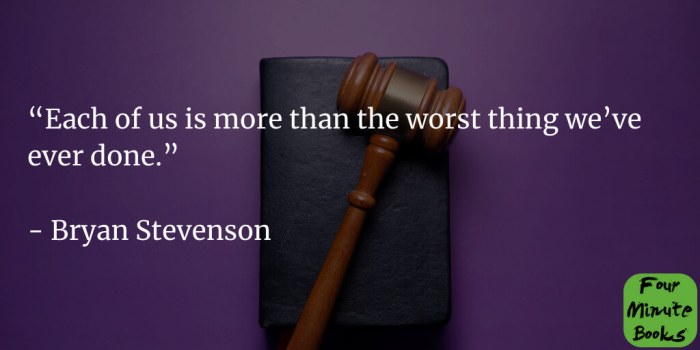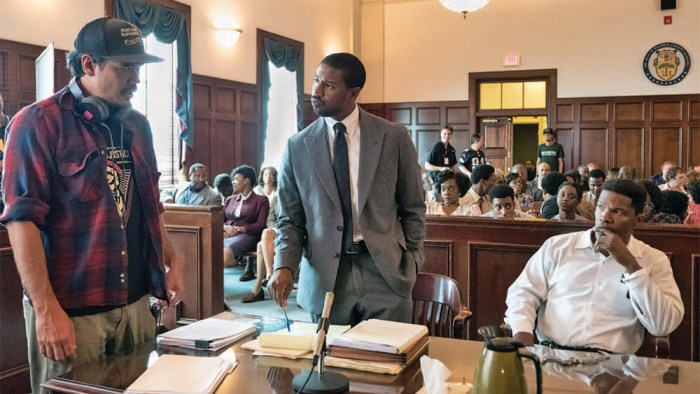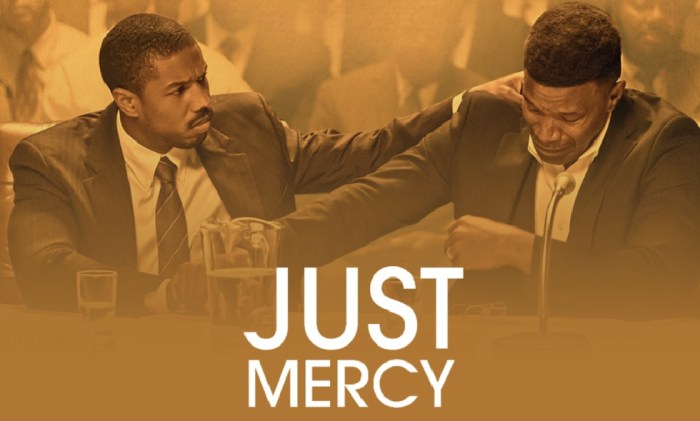Just mercy chapter 14 summary – In Chapter 14 of “Just Mercy,” we delve into the heart-wrenching case of Walter McMillian, an innocent man unjustly convicted of murder. Join us as we uncover the flaws in the prosecution’s case, the role of racism in his conviction, and Bryan Stevenson’s unwavering fight for justice.
McMillian’s case exposes the deep-seated biases that plague our justice system, highlighting the urgent need for reform and the transformative power of compassion.
Introduction: Just Mercy Chapter 14 Summary

Chapter 14 of “Just Mercy” revolves around the profound impact of mass incarceration on both individuals and society. It highlights the systemic injustices and racial disparities that fuel the American criminal justice system, exploring the devastating consequences it inflicts upon marginalized communities.
Through the lens of Walter McMillian’s case, this chapter serves as a powerful indictment of the death penalty and the inherent flaws within the judicial process. It underscores the urgent need for comprehensive criminal justice reform to address the rampant inequities and human rights violations that continue to plague the system.
Walter McMillian’s Case

Walter McMillian, a 46-year-old African American man, was wrongfully convicted of the 1986 murder of Ronda Morrison, an 18-year-old white woman. McMillian was sentenced to death and spent six years on death row before he was exonerated in 1993.The evidence against McMillian was weak and circumstantial.
The prosecution’s case relied heavily on the testimony of Ralph Myers, a career criminal who had a history of lying to the police. Myers claimed that he had seen McMillian shoot Morrison, but his testimony was contradicted by several other witnesses.The
prosecution also presented evidence that McMillian had failed a polygraph test. However, polygraph tests are not admissible in court as evidence of guilt, and experts have long criticized their accuracy.In addition to the weak evidence against him, McMillian’s conviction was also tainted by racism.
The prosecutor in the case, Michael O’Dell, had a history of making racist remarks, and he used racially charged language during his closing argument. The jury that convicted McMillian was all-white, and it is likely that racial bias played a role in their decision.McMillian’s
case is a reminder of the dangers of wrongful convictions. It also highlights the importance of fighting against racism in the criminal justice system.
Evidence Presented Against McMillian
The prosecution’s case against McMillian was based on the following evidence:
- The testimony of Ralph Myers, who claimed that he had seen McMillian shoot Morrison.
- The results of a polygraph test that McMillian failed.
- Circumstantial evidence, such as the fact that McMillian’s car was seen near the crime scene.
Flaws in the Prosecution’s Case
There were several flaws in the prosecution’s case against McMillian.
- Myers’ testimony was contradicted by several other witnesses.
- Polygraph tests are not admissible in court as evidence of guilt, and experts have long criticized their accuracy.
- The circumstantial evidence against McMillian was weak and could have been explained by other factors.
Role of Racism in McMillian’s Conviction
Racism played a role in McMillian’s conviction in several ways.
- The prosecutor in the case, Michael O’Dell, had a history of making racist remarks.
- O’Dell used racially charged language during his closing argument.
- The jury that convicted McMillian was all-white.
Bryan Stevenson’s Role

Bryan Stevenson, a young lawyer fresh out of Harvard Law School, was drawn to Walter McMillian’s case by its glaring racial bias and the overwhelming evidence of McMillian’s innocence.
Stevenson’s involvement in the case was pivotal in bringing McMillian’s case to national attention and ultimately overturning his conviction.
Challenges Faced by Stevenson
Stevenson faced numerous challenges in his quest to overturn McMillian’s conviction. The prosecution’s case was built on the testimony of a single, unreliable witness, and the all-white jury had been selected from a county with a long history of racial discrimination.
Stevenson also faced threats and intimidation from the local community, who were fiercely opposed to his efforts to overturn McMillian’s conviction.
Significance of Stevenson’s Persistence and Determination
Despite the challenges, Stevenson remained steadfast in his belief in McMillian’s innocence and his determination to fight for justice.
Stevenson’s persistence and determination were instrumental in overturning McMillian’s conviction and ultimately led to his exoneration.
Just Mercy Chapter 14 brings forth powerful insights into the complexities of the criminal justice system. Its exploration of race, poverty, and the flaws inherent within the system resonates deeply with the themes explored in the beloved classic Wind in the Willows Squire . Both works shed light on the struggles faced by the marginalized and the need for compassion and understanding in a society striving for justice.
The Impact of the Chapter

Chapter 14 profoundly advances the novel’s central themes, leaving a lasting emotional impact on the reader. It contributes significantly to the overall message of the novel, exploring the complexities of justice, mercy, and redemption.
Theme: Justice and Mercy
This chapter starkly highlights the flaws in the criminal justice system. Walter McMillian’s wrongful conviction and subsequent death row sentence expose the systemic biases and failures that can lead to gross miscarriages of justice. Stevenson’s tireless efforts to uncover the truth and seek mercy for McMillian demonstrate the importance of fighting for justice, even in the face of overwhelming odds.
Theme: Redemption
McMillian’s journey through the justice system, from his wrongful conviction to his eventual release, offers a poignant exploration of redemption. Despite the pain and suffering he endured, McMillian’s unwavering spirit and the support of his loved ones and advocates provide a glimmer of hope.
The chapter suggests that even in the darkest of times, the possibility of redemption and healing exists.
Emotional Impact, Just mercy chapter 14 summary
Chapter 14 evokes a range of powerful emotions in the reader. The injustice of McMillian’s case generates anger and frustration. Stevenson’s unwavering determination and the resilience of McMillian’s family inspire hope and admiration. The chapter’s exploration of the human capacity for both good and evil leaves the reader deeply moved and contemplative.
Popular Questions
What was the key evidence against Walter McMillian?
The prosecution relied heavily on the testimony of a jailhouse informant, whose credibility was later called into question.
How did racism influence McMillian’s conviction?
McMillian, an African American man, was tried by an all-white jury in a county with a history of racial bias.
What was Bryan Stevenson’s role in the case?
Stevenson, a young lawyer, took on McMillian’s case and dedicated years to proving his innocence.